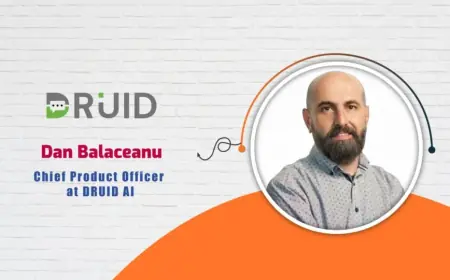The Psychology of Spotify Playlist Submission: Winning Curators Over
Spotify has transformed the way we consume music, providing artists with unparalleled access to audiences worldwide

Spotify has transformed the way we consume music, providing artists with unparalleled access to audiences worldwide. For emerging musicians, getting their tracks onto Spotify playlists can be a game-changer, propelling their careers to new heights. But with thousands of artists competing for attention, how do you make your submission stand out? The answer lies in understanding the psychology of playlist curators and leveraging that insight to craft compelling pitches.
Why Curator Psychology Matters
Playlist curators are more than just gatekeepers; they’re tastemakers with the power to influence what millions of listeners hear. Whether they’re managing an editorial playlist for Spotify or running an independent niche playlist, curators make decisions based on personal preferences, audience expectations, and market trends. Understanding their mindset helps you align your submission with what they’re looking for, increasing your chances of getting featured.
Research: The Foundation of a Successful Submission
Before approaching a curator, research is essential. This starts with identifying the right playlists for your music. Look for playlists that match your genre, vibe, and target audience. Tools like Chartmetric or SpotOnTrack can help you analyze playlists and their curators.
Once you’ve identified potential playlists, dig deeper into the curator’s preferences. What types of tracks do they typically add? Do they favor specific subgenres, themes, or moods? If a playlist focuses on upbeat summer hits, a melancholic ballad might not be the best fit. Tailoring your pitch to align with the curator’s existing style shows that you’ve done your homework.
Crafting a Relatable Pitch
The way you communicate with a curator can make or break your submission. Avoid generic pitches that feel like mass emails; curators are inundated with submissions daily, and a personalized approach helps you stand out. Start by addressing them by name and referencing their work. For instance, mention how a particular playlist inspired you or how your track complements their recent additions.
Next, tell a compelling story about your music. Highlight what makes your track unique and why it would resonate with their audience. Keep it concise but engaging. Curators are more likely to consider your submission if they can see its relevance to their playlist and audience.
Aligning Your Music with Playlist Themes
Curators aim to curate a cohesive listening experience for their audience. To increase your chances of being featured, align your track with the playlist’s overall theme or mood. For example, if you’re pitching to a chill acoustic playlist, emphasize how your song’s stripped-down arrangement and heartfelt lyrics match that vibe.
Your track’s metadata also plays a crucial role here. Ensure that your song title, artist name, and description reflect its style and mood. This not only helps curators understand your music better but also increases its discoverability in Spotify’s search algorithm.
Building Emotional Connections
Music is deeply personal, and curators often make decisions based on their emotional response to a track. Leverage this by highlighting the emotions your music evokes. Does your song capture the nostalgia of a summer romance or the exhilaration of a night out? Sharing the inspiration behind your track can create an emotional connection with the curator, making your submission more memorable.
Additionally, consider including visuals that reinforce your song’s mood. A professionally designed cover art that aligns with the playlist’s aesthetic can make your submission more appealing.
Timing Your Submission
Timing can significantly impact your success rate. Curators are more likely to feature fresh tracks, so submit your song shortly before or after its release. Avoid sending submissions during peak holiday seasons or major industry events when curators may be overwhelmed.
The Power of Building Relationships
Submitting your music shouldn’t be a one-time interaction. Building long-term relationships with curators can open doors for future opportunities. Follow them on social media, engage with their content, and show genuine appreciation for their work. This not only keeps you on their radar but also demonstrates that you value their role in the music ecosystem.
When you secure a playlist placement, take the time to thank the curator and share the playlist with your audience. This helps amplify their work and fosters goodwill, increasing the likelihood of future collaborations.
Embracing Rejection as Part of the Process
Not every submission will be successful, and that’s okay. Curators receive countless pitches, and their decisions are often influenced by factors beyond your control. Use rejection as an opportunity to refine your approach. Seek feedback when possible, and continue improving your pitch and music.
Persistence is key. Many successful artists faced numerous rejections before achieving their breakthrough. Stay focused on creating great music and building relationships, and over time, your efforts will pay off.
Conclusion
Understanding the psychology of Spotify playlist submission is about more than just getting your music featured—it’s about building connections and aligning your art with curators’ visions. By researching playlists, crafting personalized pitches, and creating emotional connections, you can significantly increase your chances of success. Remember, the journey doesn’t end with a single submission; it’s an ongoing process of learning, adapting, and growing as an artist.
Related Articles:
For further reading, explore these related articles:
For additional resources on music marketing and distribution, visit Deliver My Tune.
What's Your Reaction?
 Like
0
Like
0
 Dislike
0
Dislike
0
 Love
0
Love
0
 Funny
0
Funny
0
 Angry
0
Angry
0
 Sad
0
Sad
0
 Wow
0
Wow
0






















































